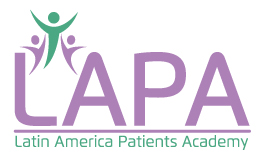2020 will be memorable for many reasons. Among our many accomplishments, LAPA exceeded expectations with training and support for over 200 patient advocacy leaders in 10 countries, a virtual campus for continuous learning, several regional collaborations, and new resources for patient advocacy organizations to help navigate the Covid-19 pandemic.
About
LAPA believes...
Pillars of Success
TRAINING
LAPA works directly with leaders of patient advocacy organizations. Graduates of the program become certified as ambassadors for public health policy and advocacy in their respective countries.
ACADEMIC EXPERTS
LAPA leverages health policy expertise from local and international academics and works with several global and regional advocacy organizations in program design and implementation.
LOCAL FOLLOW-UP
LAPA supports follow-up country-level health policy initiatives led by local graduates of the program when those goals align with LAPA's mission and vision.
History
2020
2019
In 2019, LAPA formalized operations as an independent 501c3 organization. LAPA trained patient organization leaders in Argentina, Colombia, and Chile. Academic programs were designed specifically for each country and adapted to the needs of local patient advocates after multi-stakeholder consultation and priority mapping.
The current number of LAPA program graduates in the region is 98.
Key government health officials welcomed and participated in most of LAPA's training sessions in 2019. As a result, several discussions are ongoing to determine future collaborative initiatives between local patient groups and health decision makers.
2018
In 2018, LAPA trained 46 patient organization leaders from 14 Latin American countries via face-to-face sessions in Miami, FL, Lima, Peru, and Sao Paulo, Brazil. These initiatives began as a platform supported by FIFARMA and modeled on the success of EUPATI in Europe.
Priority health policy topics for training in 2018 and 2019 included health economics and technology evaluation, medicine regulations, patient access barriers and health care innovation.
